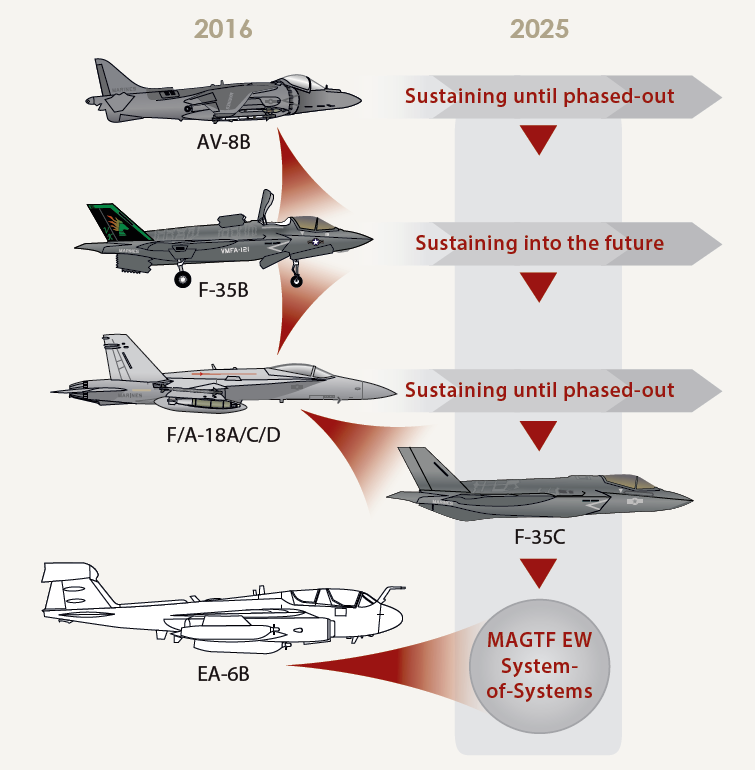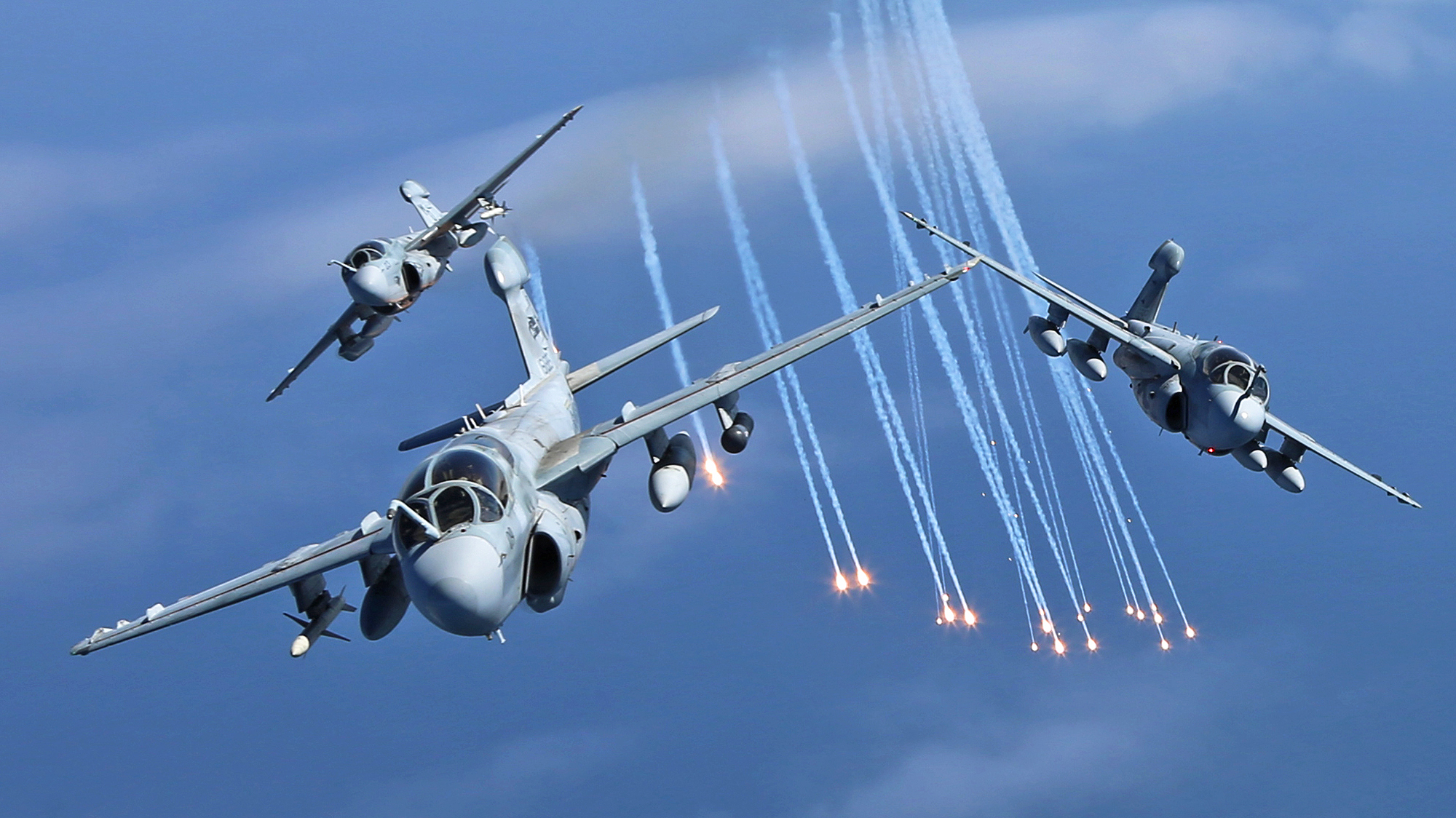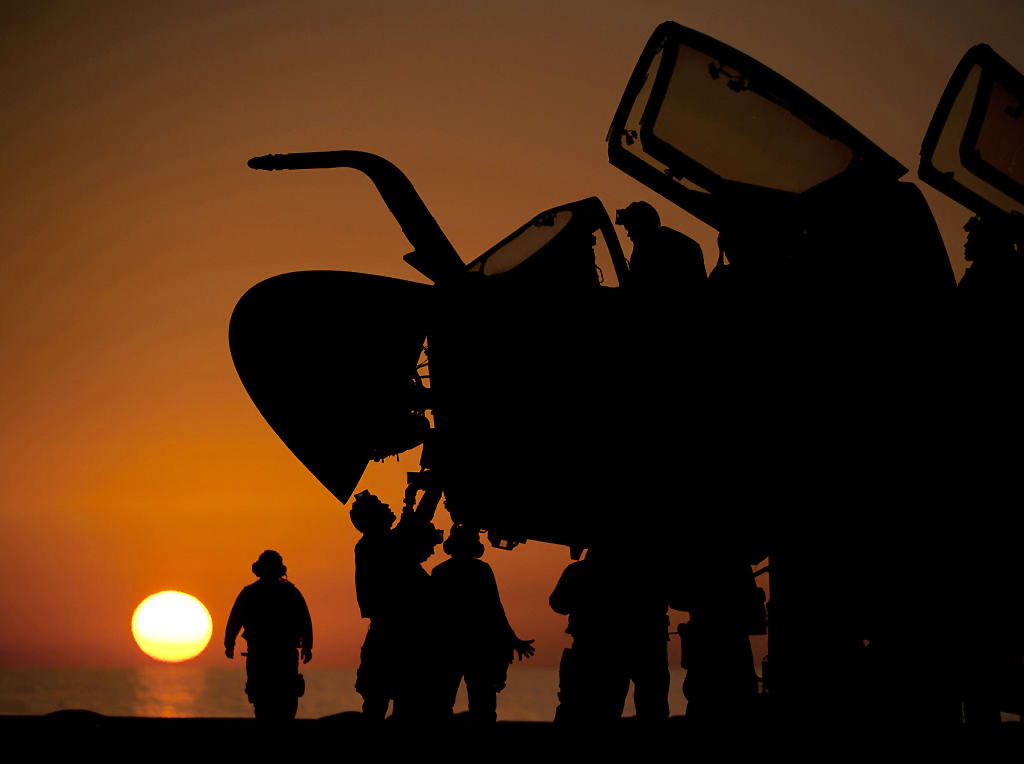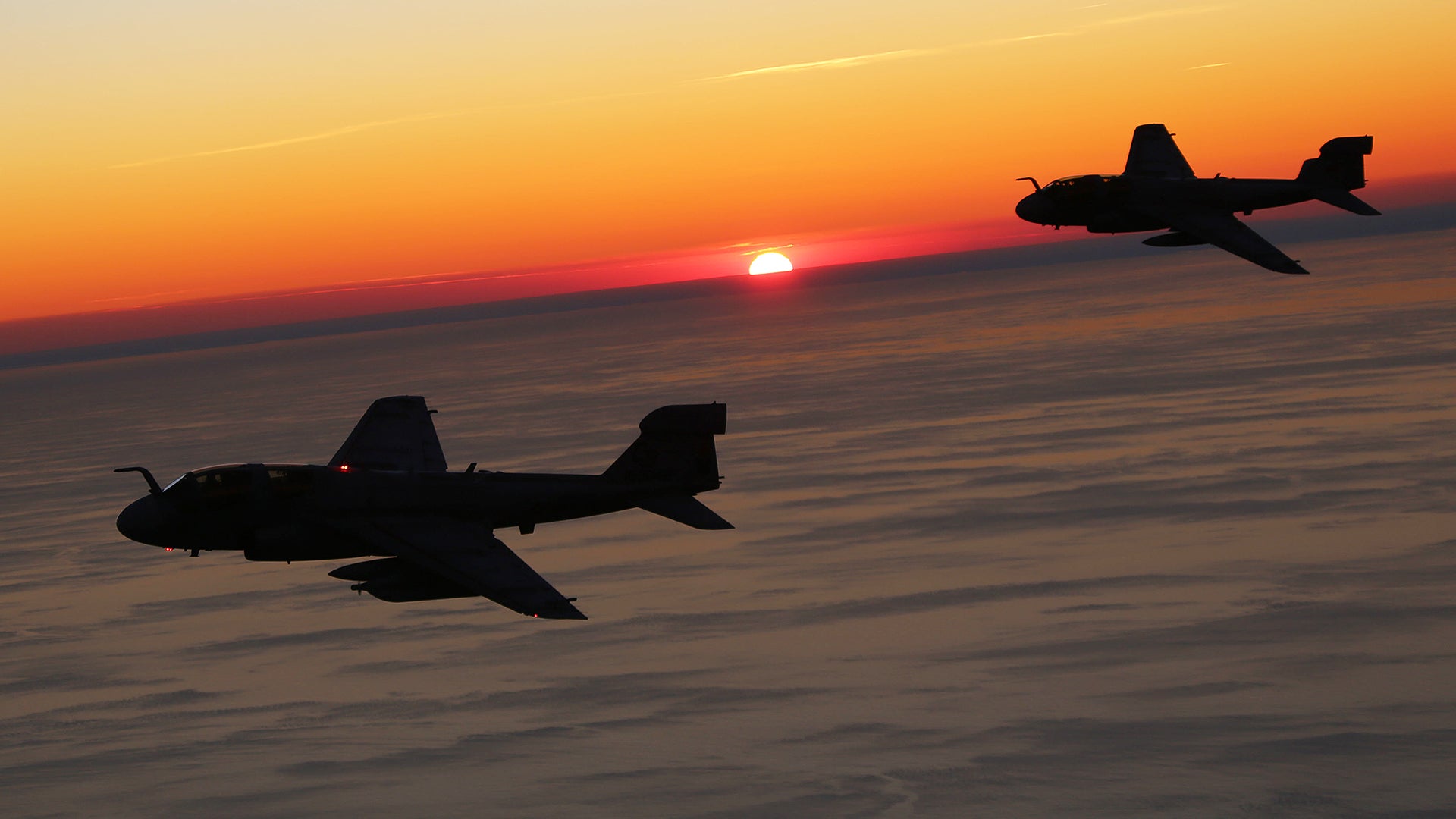It has finally happened. The EA-6B Prowler has officially been retired from service by the Marine Corps, the last operator of the type. “Prowler Sundown” has been creeping slowly closer ever since the U.S. Navy retired the aircraft back in July of 2015. The end of the Prowler also marks the end of an incredibly successful legacy for Grumman’s A-6 Intruder family of aircraft that reaches back six decades.
It all began with the YA2F-1, an incredibly ambitious carrier-based strike aircraft with thrust vectoring nozzles and ridiculously advanced computer systems for the era in which it was designed—the 1950s. This aircraft, which first flew in 1960, would be refined into the A-6 Intruder, an incredibly heavy hitting and precise nuclear-capable strike aircraft that could haul laughably large bomb loads deep into enemy territory in atrocious weather and at night while flying at very low level. The A-6 entered service in 1963 and went on to fight over in Vietnam for a decade and then on to Libya and Iraq, among other operations, as the decades progressed.
Out of the intruder, Grumman and the Navy quickly gave birth to the EA-6A, an electronic warfare variant of the two-seat Intruder that was built to jam enemy air defense radars. Just 28 examples of these aircraft were built, with the first flying in 1963. But the concept was a success and, aided by lessons learned the hard way in the dangerous skies of Vietnam, it ushered in the redesigned four-seat EA-6B Intruder. The purpose-built, carrier-capable electronic warfare jet first flew in 1968 and entered service in 1971.

Over the EA-6B’s 48 year career with the Navy and the USMC, it only became more capable and essential. After the retirement of the USAF’s EF-111 Raven in 1998, the EA-6B became nearly the sole provider of electronic warfare support for America’s air arms, with just the Air Force’s small EC-130H Compass Callfleet providing limited overlap in capability.

As time went on, the Prowler’s tricks became more numerous. The Prowler gained the ability to fire the AGM-88 Highspeed Anti-Radiation Missile (HARM) to support the suppression of enemy air defenses (SEAD) role while also offering jamming support with its ALQ-99 jamming pods. The EA-6B’s electronic warfare suite could also be used to jam some communications systems, and towards the end of its career, the Prowler community became quite capable of providing airborne jamming support aimed at disrupting remotely detonated improvised explosive devices (IEDs) that were wreaking horror on American and allied ground troops in Iraq and Afghanistan.
The final ICAPIII configured jets, which were what the Marines were flying up until today, are extremely capable aircraft. That upgrade drastically improved the Prowler’s situational awareness, ability to communicate, jamming effectiveness, and human-machine interfaces. It was used as a basis for the EA-18G Growler’s electronic warfare system development, but according to some of our sources, the ICAPIII Prowler could do some things even better than the aforementioned Growler that replaced the Prowler in Navy service.
In the last few years, the small handful of remaining USMC Prowlers still flying even hauled LITENING targeting pods, acting in the non-traditional overwatch and surveillance role while also executing their jamming mission at the same time if need be.
In essence, even though the Prowler was a remarkably dated aircraft, it too became a true multi-role platform in the twilight of its career.
You can read all about what it is like flying missions in the Prowler first hand and how it is different from the EA-18G Growler that replaced it in Navy service in this past tell-all feature of mine.
With all that being said, the USMC’s last Prowler squadron, Marine Tactical Electronic Warfare Squadron 2, or VMAQ-2 “Death Jesters,” based at Marine Corps Air Station Cherry Point, was also saying goodbye to itself along with its mount during a ceremony at the base on Friday, March 8th, 2019.
The USMC has not signed up to purchase the EA-18G Growler or another dedicated electronic warfare platform of any kind. Instead, the service will decentralize some electronic warfare capabilities across its flying fleet by using bolt-on Intrepid Tiger pods and MQ-21 Blackjack drones. But let’s be clear, these systems, although capable in their own right, do not provide the high-end electronic attack capabilities against enemy air defense systems over broad areas that the EA-6B or the EA-18G can provide.
The F-35B and C, which the USMC is buying, do have a potent electronic warfare suite, but it is focused on self-protection more than large force protection and the broad-area jamming support that the Prowlers and Growlers offer.

The 2016-2025 Naval Aviation Vision document states the following about the USMC’s move away from a centralized electronic warfare strategy:
“The Marine Corps’ comprehensive plan to address electronic warfare (EW) requirements after the EA-6B Prowler sundown in fiscal year 2019 is Marine Air Ground Task Force (MAGTF) EW, which uses modern technologies and integrates multiple aviation platforms (unmanned, fixed-wing and rotary-wing assets), payloads, ground-based EW nodes, and cyber effects to provide commanders with an organic and persistent EW capability. The MAGTF EW concept transitions the Marine Corps from focusing on low-density/high-demand EW to a distributed, networked, platform-agnostic approach. MAGTF EW will complement joint EW assets in support of ground forces and fifth-generation aircraft flying against sophisticated integrated air defense systems.”
In all, the EA-6B community, which is relatively tiny compared to those of some of their fast jet colleagues within the DoD’s inventory, flew more than 260,000 hours and were part of virtually every major U.S. military operation during their active service. Yet the one metric that can’t be counted is just how many pilots and aircraft were saved by the EA-6B’s radar scrambling capabilities.

If there was actually a way to compute that number, I am certain it would be absolutely astonishing. Remember, that for every aircraft the Prowler saved by employing its bag of electronic tricks, it meant that a bunch of other planes and service people didn’t have to punch right back into that hostile environment to rescue the downed aircrew. In other words, the EA-6B had a cumulative effect on survivability rates of American combat aircraft.
Prowlers also have been a quiet enabler of America’s stealth aircraft fleets, working as a nearly essential part of America’s stealth technology ‘cocktail,’ since the F-117 flew its first combat sorties. It is worth noting that the only F-117 lost in combat occurred during Operation Allied Force occurred on a night when there were no EA-6Bs providing an electronic attack umbrella for the stealthy jets’ forays deep into enemy airspace.
Later in life, the same can be said about soldiers on the ground. How many never knew they escaped with life and limbs intact because an angel of electronic warfare was orbiting over their heads? Now, electronic warfare is becoming a major domain of combat unlike it ever was before. The technology related to the electronic attack mission has never been more important or effective, and much greater capability is on the way. Decades of EA-6B operations informed not only the creation of the EA-18G Growler, but also the electronic warfare strategies and technologies that will help win battles for decades to come.
So, even though the iconic Grumman design is no longer in service, this is the incredible legacy the EA-6B and all who worked tirelessly on its rugged, but stubborn airframe, as well as the folks who crewed it, and everyone else who was part of designing it and sustaining the Prowler program over the years, leave behind. It is an absolutely incredible, but often misunderstood record that no plane on earth can really match. The EA-6B has truly been the most important combat jet that the public knows little to nothing about.
So as we say our final goodbye to the last of the ‘Grumman Iron’ cadre of tactical jets, we can only say thank you to everyone that made Prowler such a magnificent and long-lasting success.
Contact the author: Tyler@thedrive.com

